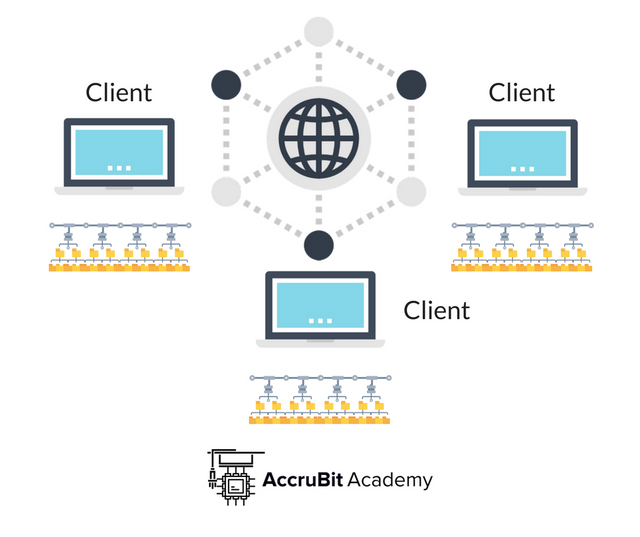In this article we will be defining blockchain technology, why it's useful, where it came from, and how it works.
Where did blockchain technology come from?
Blockchain technology was first invented with the development of the cryptocurrency Bitcoin, which is a peer to peer digital currency and payment network that enables individuals to store, retrieve, and transact anywhere in the world across any border without needing a 3rd party to facilitate the settlement of transactions.
It's important to note, that Bitcoin and blockchain are not synonymous with each other. Blockchain is the underlying software that enables Bitcoin to function as a sovereign currency, but like any other software product, there are many different variations on the market.
Due to this, there are hundreds of definitions for blockchain circulating around the internet, most of which are inaccurate and biased towards a specific product. As a market neutral blockchain developer, the below definition is universal and what you want to remember.
A blockchain is a chronologically sorted, distributed, digital ledger which contains an irreversible archive of transaction records that are stored and chained together in batches called blocks.
Now to some this definition is already too technical, but that doesn't change the fact you need to memorize it.

So why is this ledger technology useful?
Financial institutions, among others, have been using digital ledgers for decades now, but the difference and innovation behind a blockchain ledger is that the data is shared between participants in real time, and utilizes programmable smart contracts to ensure settlements take place within the agreed upon rules of the network, regardless of any competing, dishonest, or criminal intentions.
Consider ATM machines: Each machine is owned by a single institution, but accepts cards from a huge network. This sharing requires a complicated management apparatus, mostly provided by VISA. That central entity owns the database and transaction processing layer, which makes everything else possible.
If the process of using an ATM had been invented today, with blockchain as a state-of-the-art database technology as an option, we would most likely not need an administrative entity like VISA to manage the process.
Instead, the technology itself would do the heavy lifting of uniting the interests and business processes of the member banks. - Harvard Business Review
How do blockchain ledgers actually work?
On a blockchain ledger, each block of transaction records is cryptographically chained to the previous block of records (hence the name) making it impossible to go back and edit even a single binary of data without creating a separate invalid ledger.
Blockchains allow for an open, or controlled, set of users to participate in the administration of the ledger, with each record and block being linked to a specific participant. Each and every participant possesses a true and verifiable record of each and every transaction ever recorded on the ledger.

Since blockchains are peer-to-peer, they can only be updated by following a programmable consensus protocol that all participants in the system have to adhere to in order to store transactions to the blockchain. This consensus method varies between blockchains, and is engineered based on the unique requirements of the participants using the ledger.
We can compare this to traditional ledgers which are stored in standard databases on centralized servers within the specific organization the data belongs to. These databases have administrators who can technically read, write, modify, erase, and sort the data in any way they wish. In order for these ledgers to communicate between participants in the network, they must use a trusted 3rd party to mediate and oversee transactions, requiring a complex management and administrative system.
What blockchain does for business is allow separate entities to utilize a master ledger for the transfer and settlement of assets without the need for a 3rd party intermediary or complex management system.
In summary:
- A blockchain is a chronologically sorted, distributed, digital ledger which contains an irreversible archive of transaction records that are stored and chained together in batches called blocks.
- Blockchain was invented with the cryptocurrency Bitcoin, but they are not the same thing
- Blockchain ledger systems enable secure peer-to-peer transactions, settlement in real time, programmable contracts, and increased communication, transparency, and availability for participants.
- Traditional ledger systems involve multiple 3rd parties, delayed settlements, and redundant, competing systems in order to settle and fulfill transactions between participants.
- A blockchain can be either permissioned, or public, and requires a trustworthy consensus mechanism for the valid storage and retrieval of records.
The next natural questions are:
- What's the big picture here?
- How is this special programmable ledger going to change the world?
- Why shouldn't we just use what we have?
- If blockchains are so much better, why aren't they being used everywhere?
- Are blockchains just for payments or can they be used for other cases?